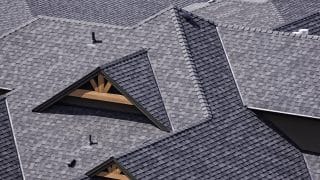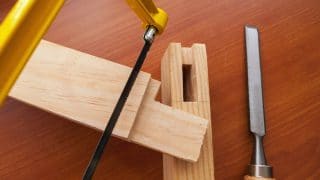How Building Codes Help You Build a Quality Deck
Sep 29, 2021

Deck building codes are drafted by model code authorities to ensure that decks are designed and constructed to be safe and durable. It can be extremely dangerous for a homeowner to use a deck that’s not built to code requirements. Rather than viewing deck building codes as a challenge, view them as a resource to determine the structural requirements without the need for an engineer to review the design.
IRC vs. IBC: Which code should you use?
Contractors use one of two building codes, depending on the type of project they’re working on. The International Residential Code (IRC) is used for single-family detached homes, two-family homes, and townhouse-style multi-family homes. The
International Building Code (IBC) is used for commercial buildings such as restaurants, office buildings, and multi-story condos and apartment buildings.
The IRC offers a simpler, prescriptive path for a deck builder to develop construction plans without having to consult an engineer, saving time and money when designing a client’s deck. There are figures illustrating conventional deck construction details and tables to determine the allowable spans for deck joists and beams, and footing size.
The IBC is a performance-based code that doesn’t include construction details for decks. Instead, it focuses on minimum load requirements for all types of structures, along with engineering resource materials and calculations to determine the deck frame design and structural support that would meet the load requirements.
Since most decks are built on residential structures, we’ll focus on how to use the IRC to design a deck plan.
International Residential Code (IRC)
The deck section of the IRC has expanded over the years. In the 2006 version of the IRC, there was only one paragraph devoted to deck construction. In the 2021 version, there are 19 pages dedicated to the topic. Rather than getting overwhelmed by the IRC’s deck code, take advantage of the information.
“The advantage for us regarding the deck portion of the code is that it has made it much easier for contractors to design decks without having to talk to an engineer or architect.” – Mike Guertin
Before you jump in, check with the local building department to see which code year was adopted by that jurisdiction and if there were any amendments enforced locally that differ from the model code. A revised version of the IRC is published every three years, but states, counties, and municipalities may base their building code on a previous version of the IRC, not necessarily the most recent.
If the building department utilizes an older, less detailed code and you want to take advantage of updated information when sizing deck joists, beams, and footings for a new deck, you can present a more recent version of the IRC to the local official and request approval to use the newer code. That’s why it always helps to have a good relationship with your local building official.
4 tips for developing a code-compliant plan

Referencing the IRC simplifies the engineering and takes a lot of the guesswork out of designing the deck structure. In the deck section of the IRC, you’ll find tables and figures that prescribe the minimum size and construction details for deck footings, posts, beams, and joists, and how to properly space and install fasteners on a deck ledger. Plus, the guard section outlines the code for deck guardrail height, strength, and opening limitations. It offers pages of details on how to properly design and build a safe deck for your clients.
Here are some tips to help you navigate the IRC.
1. Understand load requirements
There are several load requirements you’ll need to reference to determine the size and spacing of the structural elements of the deck. These are typically listed in pounds per square foot in the IRC.
- Live load requirement. This accounts for the weight of people and items placed on the deck. It doesn’t include permanent heavy equipment like a hot tub, built-in outdoor kitchen, or heavy fireplace.
- Lateral load requirement. This covers the capacity, spacing, and installation details for the hardware that will help the deck resist lateral load forces pulling it away from the adjacent structure.
- Dead load requirement. This covers the presumed weight of the deck construction materials, including joists, rim joists, beams, decking, supports posts, and the guardrail system.
- Snow load requirement. If you live in an area that gets deep snow in the winter, you must design the deck structure to handle the weight of snow, otherwise the deck could collapse. Consult your local building code for the correct requirement.
2. Recognize the lumber variables
There are a few lumber-related variables that are noted in the IRC tables for sizing joists and beams. Different species have different strength properties, so they’re grouped into separate sections based on those properties.
Lumber cut from stronger species can span greater distances. And because some species don’t accept preservative treatment chemicals as well as others, the surfaces of those wood species must be incised (small knife kerfs dimpling the wood surfaces) to ensure a minimum level of chemical penetration. Incising reduces the strength of the wood, which is reflected in the allowable spans in the beam and joist tables.
The lumber grade refers to the quality of the wood. The IRC tables are based on #2 grade lumber. If the lumberyard supplying the deck building materials stocks #1 grade lumber, you can still use the IRC tables because it is better quality wood. You can also follow alternative prescriptive tables and utilize the greater spans #1 grade lumber is capable of reaching.
The deck beam and deck joist span tables in the IRC already have a wet service adjustment factor applied, so there’s no need to reduce a span listed on the table to account for the deck being exposed to the elements.
Deck building codes are drafted by model code authorities to ensure that decks are designed and constructed to be safe and durable. It can be extremely dangerous for a homeowner to use a deck that’s not built to code requirements. Rather than viewing deck building codes as a challenge, view them as a resource to determine the structural requirements without the need for an engineer to review the design.
IRC vs. IBC: Which code should you use?
Contractors use one of two building codes, depending on the type of project they’re working on. The International Residential Code (IRC) is used for single-family detached homes, two-family homes, and townhouse-style multi-family homes. The
International Building Code (IBC) is used for commercial buildings such as restaurants, office buildings, and multi-story condos and apartment buildings.
The IRC offers a simpler, prescriptive path for a deck builder to develop construction plans without having to consult an engineer, saving time and money when designing a client’s deck. There are figures illustrating conventional deck construction details and tables to determine the allowable spans for deck joists and beams, and footing size.
The IBC is a performance-based code that doesn’t include construction details for decks. Instead, it focuses on minimum load requirements for all types of structures, along with engineering resource materials and calculations to determine the deck frame design and structural support that would meet the load requirements.
Since most decks are built on residential structures, we’ll focus on how to use the IRC to design a deck plan.
International Residential Code (IRC)
The deck section of the IRC has expanded over the years. In the 2006 version of the IRC, there was only one paragraph devoted to deck construction. In the 2021 version, there are 19 pages dedicated to the topic. Rather than getting overwhelmed by the IRC’s deck code, take advantage of the information.
“The advantage for us regarding the deck portion of the code is that it has made it much easier for contractors to design decks without having to talk to an engineer or architect.” – Mike Guertin
Before you jump in, check with the local building department to see which code year was adopted by that jurisdiction and if there were any amendments enforced locally that differ from the model code. A revised version of the IRC is published every three years, but states, counties, and municipalities may base their building code on a previous version of the IRC, not necessarily the most recent.
If the building department utilizes an older, less detailed code and you want to take advantage of updated information when sizing deck joists, beams, and footings for a new deck, you can present a more recent version of the IRC to the local official and request approval to use the newer code. That’s why it always helps to have a good relationship with your local building official.
4 tips for developing a code-compliant plan

Referencing the IRC simplifies the engineering and takes a lot of the guesswork out of designing the deck structure. In the deck section of the IRC, you’ll find tables and figures that prescribe the minimum size and construction details for deck footings, posts, beams, and joists, and how to properly space and install fasteners on a deck ledger. Plus, the guard section outlines the code for deck guardrail height, strength, and opening limitations. It offers pages of details on how to properly design and build a safe deck for your clients.
Here are some tips to help you navigate the IRC.
1. Understand load requirements
There are several load requirements you’ll need to reference to determine the size and spacing of the structural elements of the deck. These are typically listed in pounds per square foot in the IRC.
- Live load requirement. This accounts for the weight of people and items placed on the deck. It doesn’t include permanent heavy equipment like a hot tub, built-in outdoor kitchen, or heavy fireplace.
- Lateral load requirement. This covers the capacity, spacing, and installation details for the hardware that will help the deck resist lateral load forces pulling it away from the adjacent structure.
- Dead load requirement. This covers the presumed weight of the deck construction materials, including joists, rim joists, beams, decking, supports posts, and the guardrail system.
- Snow load requirement. If you live in an area that gets deep snow in the winter, you must design the deck structure to handle the weight of snow, otherwise the deck could collapse. Consult your local building code for the correct requirement.
2. Recognize the lumber variables
There are a few lumber-related variables that are noted in the IRC tables for sizing joists and beams. Different species have different strength properties, so they’re grouped into separate sections based on those properties.
Lumber cut from stronger species can span greater distances. And because some species don’t accept preservative treatment chemicals as well as others, the surfaces of those wood species must be incised (small knife kerfs dimpling the wood surfaces) to ensure a minimum level of chemical penetration. Incising reduces the strength of the wood, which is reflected in the allowable spans in the beam and joist tables.
The lumber grade refers to the quality of the wood. The IRC tables are based on #2 grade lumber. If the lumberyard supplying the deck building materials stocks #1 grade lumber, you can still use the IRC tables because it is better quality wood. You can also follow alternative prescriptive tables and utilize the greater spans #1 grade lumber is capable of reaching.
The deck beam and deck joist span tables in the IRC already have a wet service adjustment factor applied, so there’s no need to reduce a span listed on the table to account for the deck being exposed to the elements.
3. Meet deck guardrail code requirements
Residential decks require a guard (commonly referred to as a guardrail) to prevent people from falling off the edges of a deck when the deck surface is greater than 30 inches above the surrounding grade or another surface. The IRC doesn’t limit the types of materials or how we configure a guardrail system, but it does list minimum height, maximum spacing, and structural capacity of guardrail system elements.
The top of a guardrail must be at least 36 inches high, measured from the surface of the deck to the top of the guardrail. The maximum spacing allowed between any of the infill below the top of the guard to the deck surface is less than four inches. The code uses a test for the infill, stating that the infill materials must prevent passage of a 4-inch diameter sphere—think the size of an infant’s head.
Additionally, the deck guardrail and the structural guard support posts must be engineered to resist a 200-pound load. Often this is applied as a 500-pound test load to account for the code-required safety factors called for in an engineered design.
The 2021 IRC also requires that guard posts be fastened to the deck structure with a continuous load path, and the joist, rim joist, or beam that posts are fastened to must be connected to adjacent deck joists in a way that prevents rotation of the joist, rim joist, or beam. The connections cannot rely exclusively on fasteners driven into end-grain. Though this new deck code section doesn’t provide a prescriptive design for how to attach guardrail posts, it does prompt deck builders to improve their guard post-to-deck frame connections.
Need a refresher on how to space balusters evenly, with no awkward space at the end? Learn essential construction math in MT Copeland’s online Construction Math class.
4. Reference IRC tables
The IRC provides in-depth tables outlining the various requirements for building a deck based on all of the variables discussed.
For instance, it’s easy to determine the maximum deck joist span using Table R507.6. Once you know which is greater—the live or snow load (depending on your local climate and model code authorities)—and lumber species, you can then reference the table to see the allowable joist span for a given joist size (2×6, 2×8, 2×10, 2×12) and joist spacing (12 inches on-center [oc], 16 oc, 24 oc).
Likewise, once you know the species and the greater of the live or snow load, you can use Table R507.5 to determine the maximum span between support posts and footings for a given beam size (depth and number of plys) from a single 2×6 to a triple 2×12.
Table R507.3.1 lists the size of the deck footings based on the tributary area of the deck that will bear on a given footing and the soil-bearing capacity.
The IRC also includes Table R507.2.3, which details fastener and connection specifications, including the minimum finish and coating. The table gives an overview for nails and timber rivets, bolts, lag screws, and metal connectors.
MT Copeland offers video-based online classes that give you a foundation in construction fundamentals with real-world applications, like how to build a freestanding deck. Classes include professionally produced videos taught by practicing craftspeople, and supplementary downloads like quizzes, blueprints, and other materials to help you master the skills.







